During the 1980s, when my two daughters were in middle school, I introduced them to cross-country skiing. My home town, where I grew up, is called Escanaba, located in the Upper Peninsula of Michigan. One winter, we made the long drive to Escanaba from where we were living in Wisconsin to ski on the Escanaba Cross Country Ski Pathway. There was a large sign at the trailhead on the northwest end of town announcing the ski trail.
The girls had their skis on and were waiting for me. I bent down by the trailhead sign and put on my skis when a young skier with expensive gear put on his skis next to me. I said, “Hi, looks like the trail is well-groomed.” The young man said nothing.
So, I stood up to take off on the trail, and while looking at him, I said, “Enjoy the trail.” As I pushed off, I slammed full-face into the huge sign and fell flat on my back. The arrogant skier said nothing and took off on the trail, while both my daughters came to my side to see if I was okay. We then began laughing. The only thing I injured was my pride.
What about Esky?
Escanaba (pronounced, Es-can-ah-bah), fondly called “Esky” occasionally, is a quintessential Midwest town with a population of 12,615 according to the 2010 census. Interestingly, in 1960 the population maxed at 15,391 and has since gradually diminished over time to its present demographic. However, the community remains strong, and the economy is doing well with some industry, retail, and tourism (except interruption in 2020 due to the coronavirus pandemic).
Escanaba sits near Little Bay de Noc as it opens into Lake Michigan. Then, just north of town is the Escanaba River that feeds into the bay. This cozy community is a popular mecca for outdoor recreation in all seasons. Being a lakefront and Northwoods area, fishing, hunting, and a variety of outdoor sports are popular. In winter, people in this small town in Michigan’s Upper Peninsula take to cross-country skiing, snowshoeing, ice skating, ice fishing, and snowmobiling.
As for the name, “Escanaba” comes from an Ojibwa word meaning “land of the red buck.” It is also thought to mean “flat rock.” When my daughters were children, I told them the meaning of the word. They giggled because they thought I said “land of the red butt.”
Read More: Crossing Paths On My Ojibwa Snowshoes
Snowshoeing Trails Near Escanaba
So, did I return home to check out snowshoeing? Yes, I did. Last winter, I decided to return home to check out the snowshoeing scene in the area.
Escanaba Ski Trail
I returned to the Escanaba ski trail, where I compromised my pride many years ago. The trail is now called the Escanaba Recreational Non-Motorized Pathway. Still located on the northwest side of town, the pathway starts through a lowland brush area and then heads into a pine forest.
In winter, this area becomes a picturesque winter wonderland. You can take one of six loops with nearly 7 miles (11 km) of groomed trails for cross-country skiing or take a four-mile snowshoe trail. However, snowshoers who take the ski loops are to travel alongside the groomed trails.
Read More: Trail Etiquette For Snowshoeing & Winter Hiking
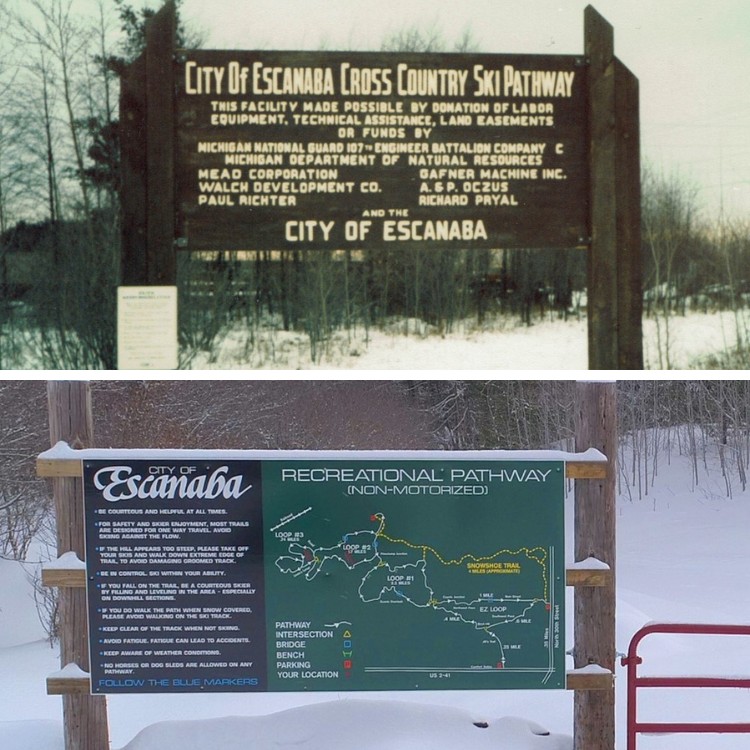
Top photo: 1980s recreation sign from when our author had his embarrassing moment (Jim Joque)
Bottom photo: Recreation sign today (Courtesy of Visit Escanaba)
Ludington Park
Another snowshoeing location in downtown Escanaba is Ludington Park at the east end of Ludington Street (also referred to as Main Street).
This charming park spans a mile (1.6 km) along the bay. It includes playgrounds, sports courts, a gazebo, band shelter, veteran’s memorial, picnic areas, a marina with a yacht club, and a museum with a historic lighthouse. Also, a bridge connects the park to Aronson Island, where there are a walking trail and a public swimming beach.
In my childhood, Ludington Park was my playground. My parents took their five children to this park to picnic, swim, play on the swings and slides, fly kites, and watch fireworks on the 4th of July. But, in winter, we would play in the snow and slide down the park hill on sleds.
Time has not altered this remarkable playland much at all, other than some added recreation structures. Ludington Park remains a highlight of Escanaba. And, it is a haven for snowshoeing.
To get in a nice workout, put on your snowshoes at either end of the park. Then, snowshoe the full mile-long length and back. If snow-covered, take the sidewalk. Or snowshoe anywhere in the open space of the park. Moreover, a fanciful side trip is to cross over the small bridge connecting to Aronson Island and hike the half-mile (0.8 km) trail to the point and back.
On my visit, I put on my Northern Lites snowshoes at a north parking area. Then, I headed out from the gazebo, following alongside a path laid down by cross-country skiers. As I hiked, I was inundated with fond memories from the past of Ludington Park. It was a clear blue-sky day with moderate temperatures in the 20’s. Snow conditions were perfect for an afternoon stroll in the park.
Read More: Snowshoeing In Your Own Backyard: Snowshoe Options Close To Home
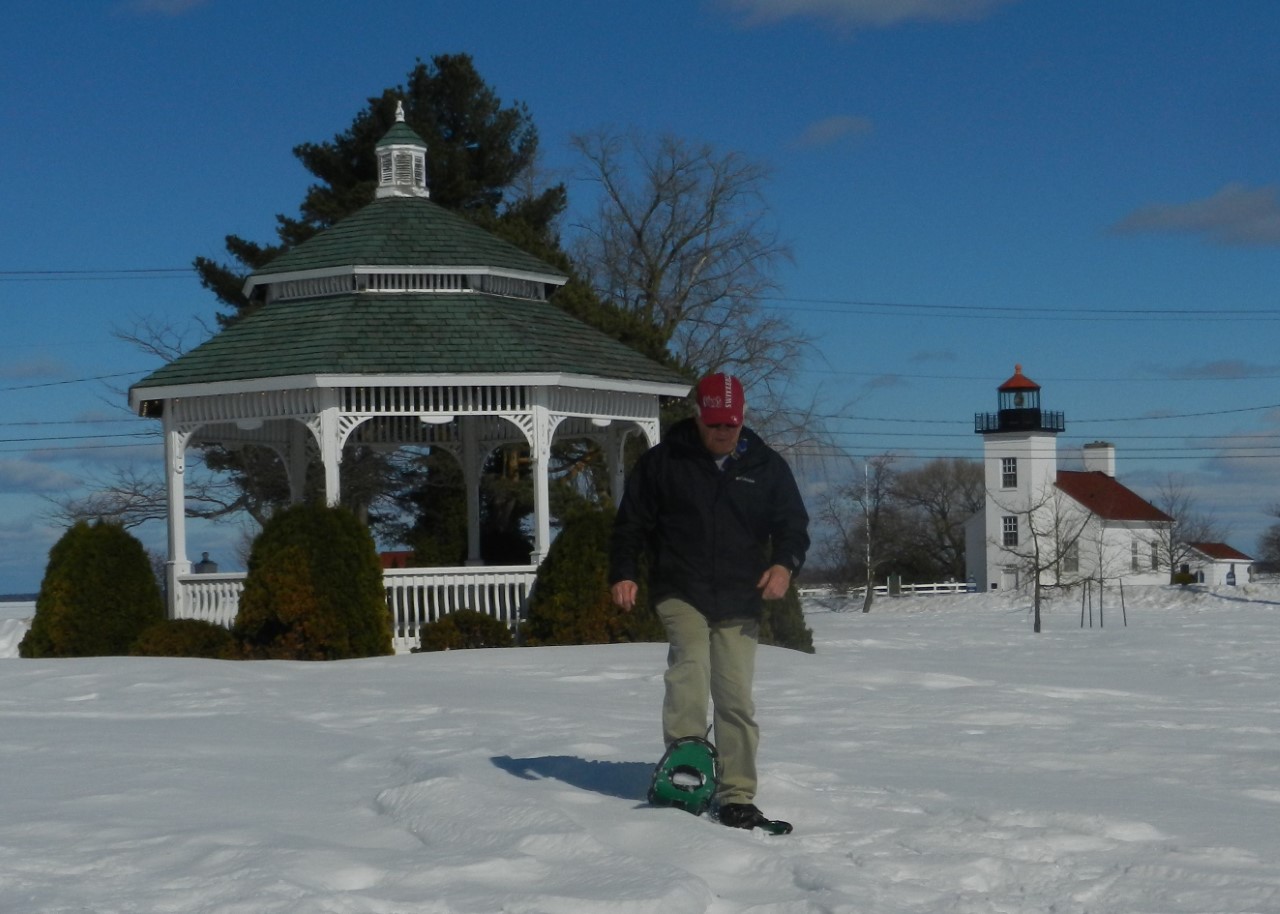
The author snowshoeing in Ludington Park this past season, heading out from the Gazebo. Photo: Jim Joque
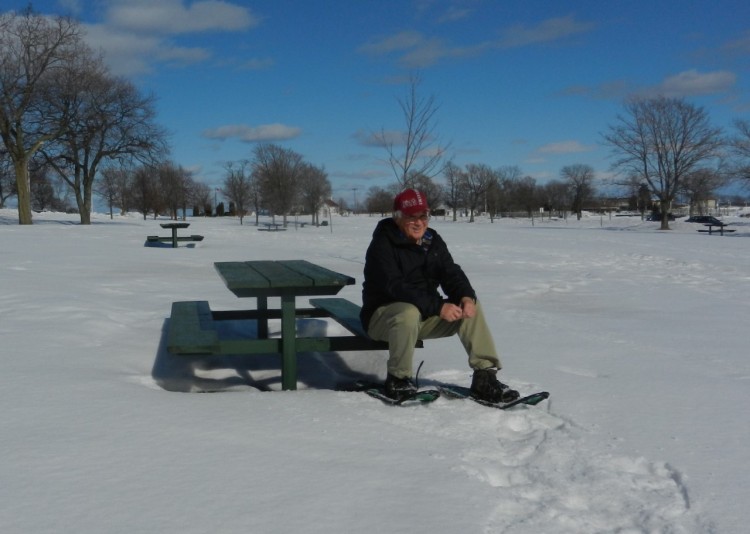
Since it’s a mile-long hike in Ludington Park, Jim Joque decides to take a break along the way. Photo: Jim Joque
Little Bay De Noc Trail
Another snowshoeing option near Escanaba and in Michigan’s Upper Peninsula is the Little Bay de Noc Trail, located along the bay’s northwest side. This 2.5-mile (4 km) long trail is a non-motorized, waterfront walking/biking path. The trail goes from north of Escanaba to the next town of Gladstone and runs parallel to US Highways 2 & 41.
Escanaba to Hermansville Rail Trail
For the hearty snowshoer, a fairly new trail runs from Escanaba to the small village of Hermansville. Starting near the Upper Peninsula State Fairgrounds in town, the Escanaba to Hermansville Rail Trail follows a former Soo Line Railroad.
The trail travels for 25 miles (40 km) through heavily wooded areas and over three scenic bridges. One can always put in at various locations and snowshoe in for a mile or so, and then come back. I toast the one who makes the entire 25-mile snowshoeing trip in this region of Michigan’s Upper Peninsula. Note that this is a shared trail and open to snowmobilers. So, snowshoers and skiers, be cautious.
Read More: Building & Maintaining Endurance For Snowshoeing
Can I go home again?
The 20th-century author Thomas Wolfe wrote, “You Can’t Go Home Again.” I assume that Wolfe focused on nostalgia, and anticipating coming home again would relive the past – which won’t happen.
When I went home to visit Escanaba last winter, places, people, and ambiance have indeed changed. But to walk in places where I once lived over 50 years ago, I experienced fond memories and emotions that made me seem as if I was home once again. In that sense, I did go home again. And, I hope to return to visit Escanaba sometime in the future…to snowshoe.
What about you? What are some of your favorite snowshoeing locations in your hometown? Also, what about snowshoeing in the Upper Peninsula of Michigan? Please share with us in the comments below.
Read Next:
Plenty of Snowshoeing Options In Wisconsin’s Northwoods Region
What’s A Yooper? And What’s A Yooper Doing On Snowshoes?
Snowshoeing For Beginners: The First-Timer’s Guide
Snowshoeing Up High In The Midwest: Wisconsin, Minnesota, Michigan

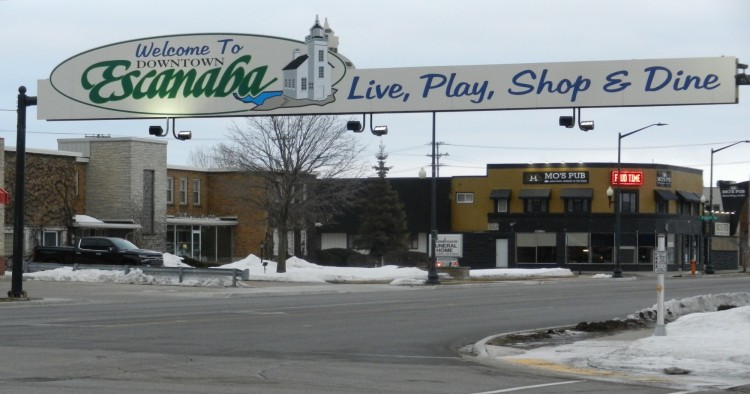
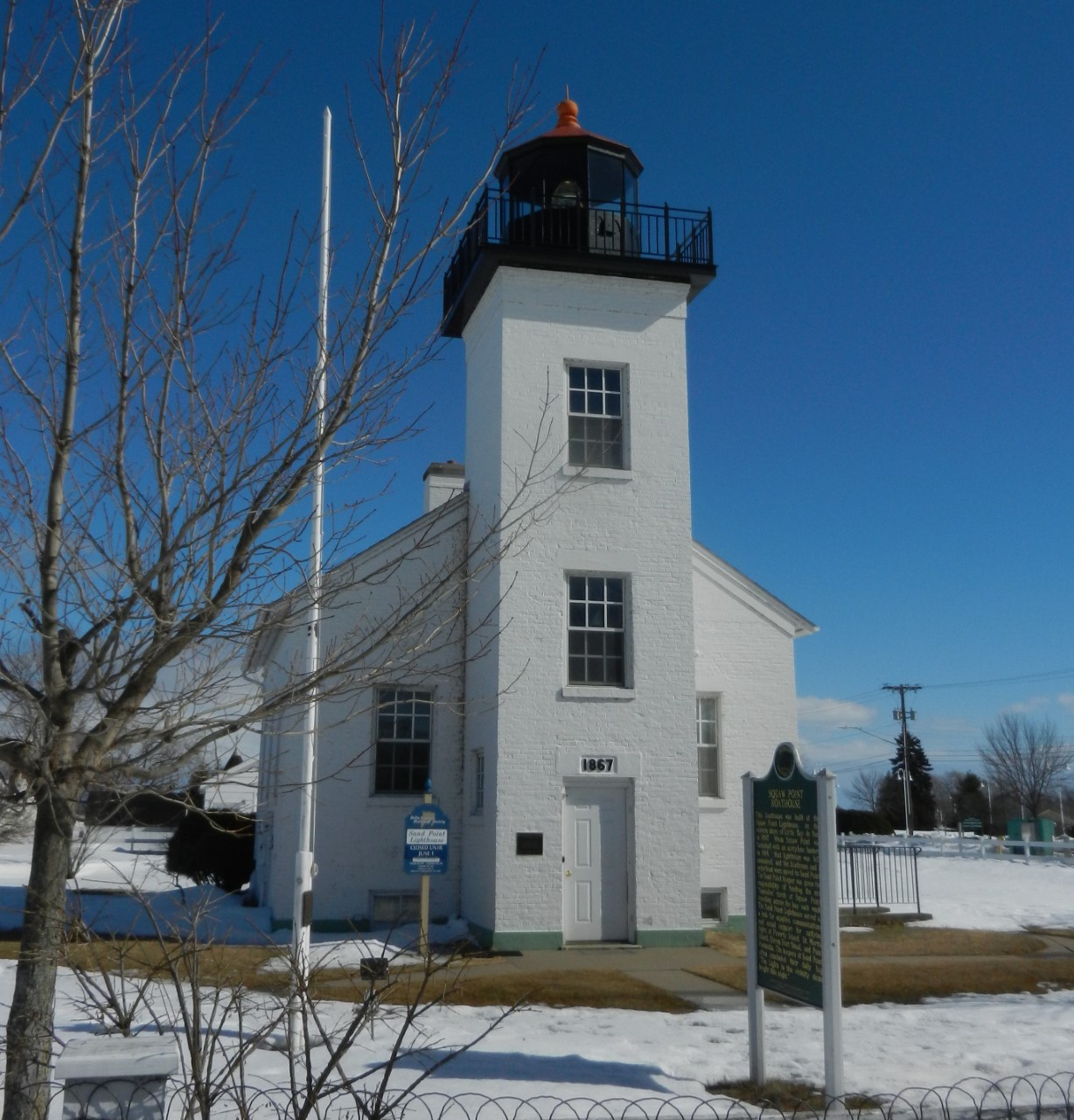
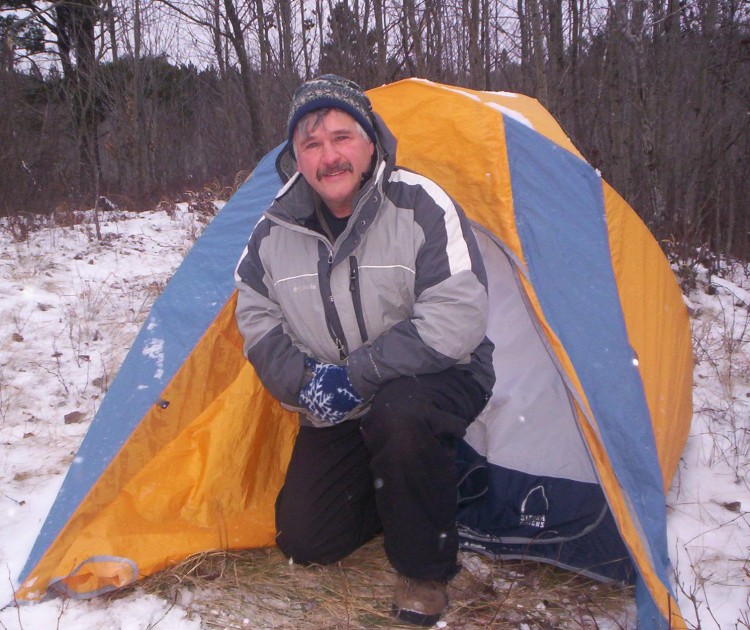
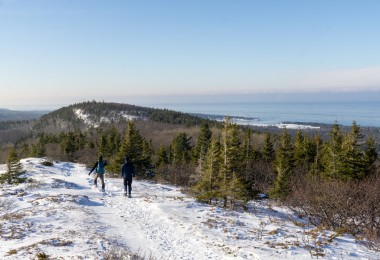
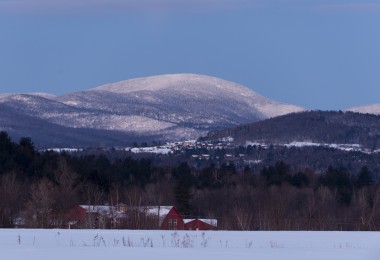
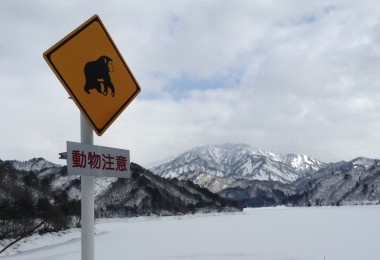
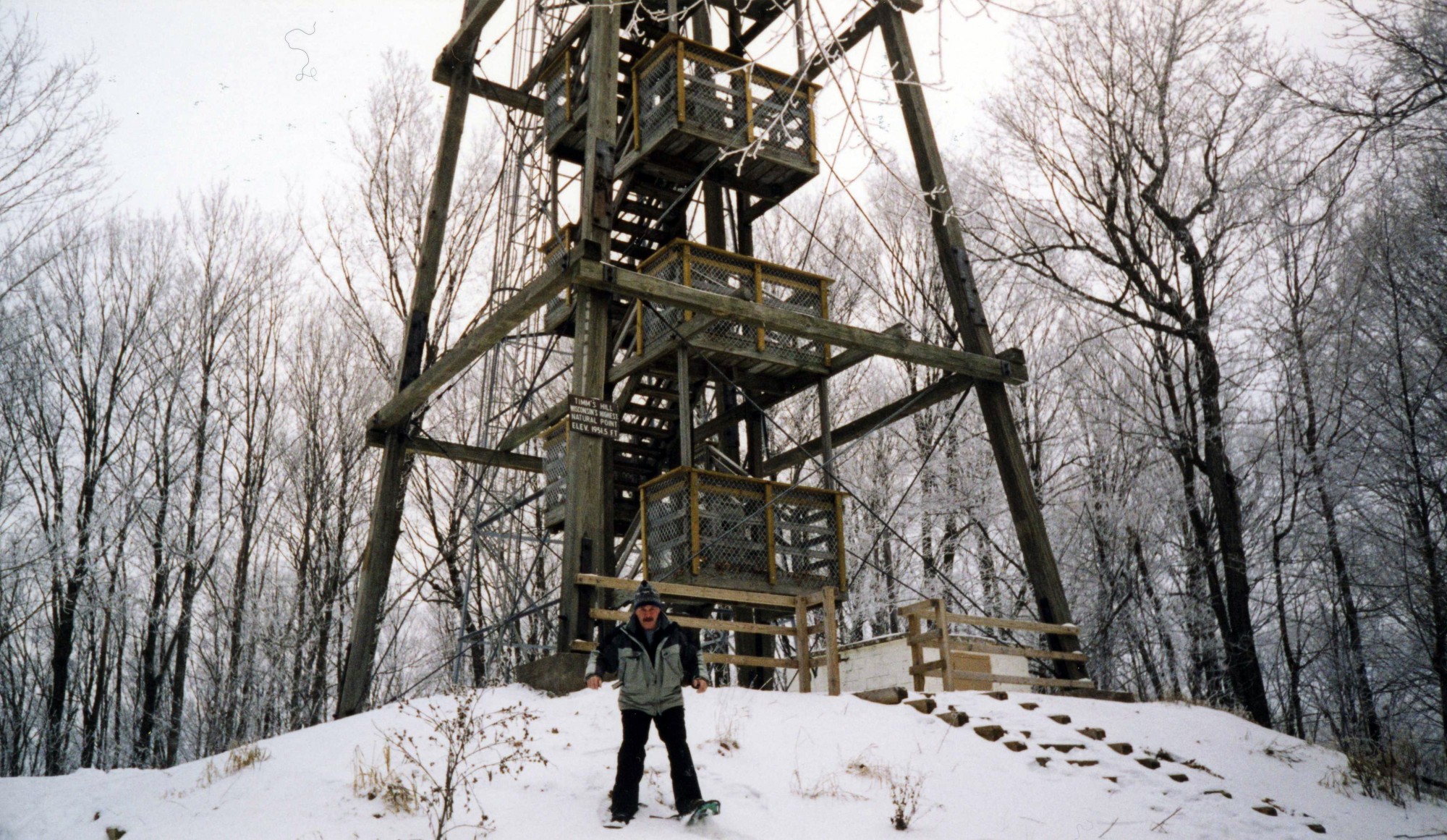

Leave a Comment